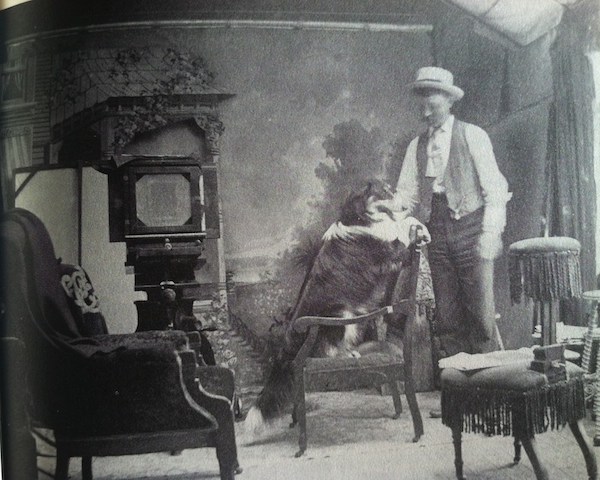
We tend to underestimate one of the more remarkable aspects of photography in its infancy: How often people brought their dogs to studios to have likenesses made of them. In fact, thousands of ordinary Americans went to studios for “sun pictures.” When photography got to where it was simplified enough to become an amateur pastime in the 1880s, people began to document their pets in both ordinary and posed situations. In the picture seen here, Charles J. Van Schaick posed a Collie in his studio.
The earliest photos were Stereographs, an especially popular format for early animal photos. In a stereograph, two nearly identical prints are with a double-lens camera which are then pasted side by side on a card. When viewed through a stereoscope, which is how most people saw them, the two prints combined to create the illusion of 3D.
Mind you, this was a major challenge. Perhaps you’ve already noticed in antique photos how grim the people in an old sepia toned photographs seemed to be. This is because in the early years of photography, even slightest movement caused blurring on plates and paper negatives. People needed to find an expression and pose they could hold for several minutes. Photographing dogs, then, was a significant challenge, since they wagged tails, panted, and did all masnner of unexpected movement. Until faster film and compact camera hit the market – in the late 19th century, this is what faced both photographer and client.
To see some other early dog photographs, click here. The owners of a Bulldog, Skye Terrier, Borzoi, Great Dane, Poodle, West Highland White Terrier, Wire Fox Terrier, Samoyed, Scottie, Chow Chow, Saint Bernard, German Shepherd Dog (and a few others) will want to see this.
